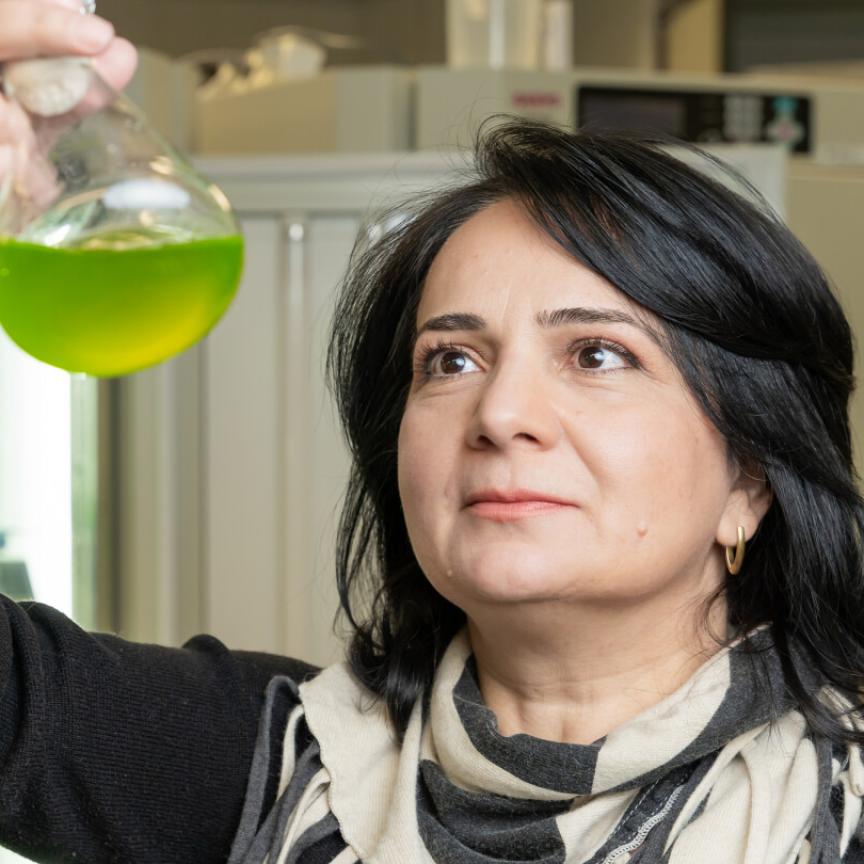On 14 July, Nasa’s New Horizons spacecraft reached Pluto after a decade-long journey through the solar system. The spacecraft began transmitting images and spectroscopic data of the dwarf planet – which will allow scientists to investigate Pluto’s global geology and chemical and atmospheric makeup – at 2am GMT on the 14 July, but the total amount of data collected by New Horizons’ probes could take up to 16 months to transmit back to Earth over a distance close to five billion kilometres.
Data transmission from most spacecraft is via radio waves, but the recent Sentinel Earth observation mission launched by the European Space Agency will transfer its remote sensing data using laser light. This comes after Nasa demonstrated free-space optical communication from the Moon to Earth in 2013, transmitting data at a download rate of 622Mb/s.
Radio frequency for space communication is reaching its limit as demand for greater data capacity continues to increase, Donald Cornwell, head of Nasa’s Space Communications and Navigation Programme, commented during Photonics West in San Francisco at the beginning of the year. Higher sensor resolutions mean that more data can be collected by spacecraft probes, which in turn requires greater bandwidth for data transfer.
Nasa is currently developing its deep space optical communications (DSOC) system, which the space agency plans to send to Mars in a 2020 mission to relay data back from the planet. Nasa anticipates that the DSOC will be able to deliver approximately 250Mb/s from Mars to Earth, a large increase from the 6Mb/s which is possible today.
The Laser Communication Terminal (LCT) onboard Sentinel-2A transfers data at a rate of 1.8Gb/s over a maximum of 40,000km, around 30 times higher bandwidth than what was previously possible.
Sentinel-2A was launched on 23 June and is the first optical imaging satellite in Europe’s Copernicus environmental surveillance programme. It carries a high-resolution multispectral camera with 13 spectral bands, and will provide data for various applications, among which are monitoring agricultural practices and mapping changes in land cover. Other tasks include providing information on pollution in lakes and coastal waters, as well as contributing to mapping floods, volcanic eruptions and landslides in order to aid humanitarian relief efforts.
Sentinel-2A’s Laser Communication Terminal will transmit the data optically to a relay satellite with better visibility of Earth than the Sentinel spacecraft, and from there the data will be sent to a ground station.
The Fraunhofer Institute for Laser Technology (ILT) produced the diode laser pump module for the system, in collaboration with Tesat-Spacecom and the Ferdinand Braun Institute. Martin Traub, who led the project at Fraunhofer ILT, explained the advantages of using laser light for space communication: ‘You can increase the bandwidth with a laser; you have higher density of information because of the shorter wavelengths compared to radio waves.’
A second advantage, he continued, of using light to transmit information is that, due to the shorter wavelength, ‘the laser beam has a much smaller footprint compared to radio waves,’ he explained. ‘Thus the laser beam can be concentrated very efficiently on the receiver optics. Therefore you need less energy to transmit the signal.’
Traub added that all these components have to be qualified for operation in the harsh environments of space, and have to be able to withstand radiation and extremes in temperature, as well as shock and vibration.
The images captured by the New Horizons spacecraft, which has a payload consisting of three optical instruments, two plasma instruments, a dust sensor and a radio science receiver/radiometer, confirmed that Pluto is 2,370km in diameter, somewhat larger than many prior estimates.
The determination of the dwarf planet’s size was made possible by the Long Range Reconnaissance Imager (Lorri), a panchromatic high-magnification imager consisting of a telescope with a 20.8cm aperture that focuses visible light onto a CCD. During its closest encounter, Lorri imaged select sections of Pluto’s sunlit surface at football-field-size resolution, resolving features at about 50m across.
The main ‘eyes’ of New Horizons, Ralph, is a combined infrared spectrometer and imager charged with producing the maps that show what Pluto, its moons, and potentially other Kuiper Belt objects look like. Ralph consists of three panchromatic and four colour imagers inside its Multispectral Visible Imaging Camera (MVIC), as well as an infrared compositional mapping spectrometer called the Linear Etalon Imaging Spectral Array (LEISA). LEISA is an advanced, miniaturised short-wavelength infrared (1.25-2.50µm) spectrometer.
Ralph’s suite of eight detectors – seven CCDs and an infrared array detector – are fed by a single, sensitive magnifying telescope. The entire package operates on less than half the wattage of an appliance light bulb.
Ralph will aid the search for clouds and hazes in Pluto’s atmosphere, and for rings and additional satellites around Pluto. At the same time, LEISA will map the amounts of nitrogen, methane, carbon monoxide, and frozen water and other materials, including organic compounds, on the surface of Pluto and its moons.
If New Horizons had a laser communications terminal, data transfer might be quicker than 16 months. However, with Nasa working on its deep space optical communications system, it seems that laser transmission is the future of space communications.
 Greg Blackman is the editor for Electro Optics, Imaging & Machine Vision Europe, and Laser Systems Europe.
Greg Blackman is the editor for Electro Optics, Imaging & Machine Vision Europe, and Laser Systems Europe.
You can contact him at greg.blackman@europascience.com or on +44 (0) 1223 275 472.
Find us on Twitter at @ElectroOptics, @IMVEurope, and @LaserSystemsMag.


